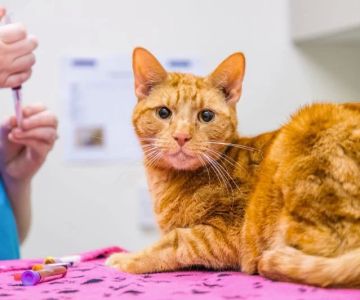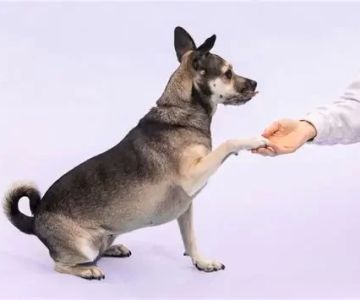- 1 - Understanding Pet Mobility Issues
- 2 - Common Causes of Mobility Challenges in Pets
- 3 - Signs Your Pet May Need Mobility Support
- 4 - How Ramps Can Help Pets Move Safely
- 5 - Using Support Harnesses and Slings
- 6 - Rehabilitation and Gentle Exercise
- 7 - Real-Life Story: A Pet’s Journey to Regain Mobility
- 8 - How Hidden Brook Veterinary Can Help
1. Understanding Pet Mobility Issues
When our pets begin to struggle with movement, it can be heartbreaking to watch. Whether it’s a senior dog hesitating before climbing stairs or a cat no longer jumping onto their favorite windowsill, mobility issues can impact a pet’s quality of life dramatically. Understanding how to help pets with mobility issues begins with recognizing that it’s not just a sign of aging—it can also indicate pain, injury, or underlying medical conditions that require professional care.
Addressing mobility concerns early can help prevent long-term complications. With proper support tools like ramps and harnesses, you can make daily life safer and more comfortable for your furry companion.
2. Common Causes of Mobility Challenges in Pets
There are many reasons pets experience difficulty moving around. Some of the most common causes include:
1. Arthritis and Joint Degeneration: Older dogs and cats often suffer from arthritis, leading to stiffness, pain, and limited movement.
2. Injuries or Surgeries: Pets recovering from surgeries such as cruciate ligament repair or hip operations may temporarily need help moving safely.
3. Neurological Disorders: Conditions affecting the spine or nerves can lead to loss of coordination or partial paralysis.
4. Obesity: Extra weight puts strain on a pet’s joints, making climbing or walking more difficult.
5. Genetic Factors: Certain breeds—like Dachshunds, Corgis, or German Shepherds—are predisposed to mobility issues due to their body structure.
Recognizing the cause of your pet’s difficulty is the first step toward finding the right combination of ramps, support devices, and therapy to help them regain confidence.
3. Signs Your Pet May Need Mobility Support
Not every mobility issue is immediately obvious. Subtle behavioral changes often come first. Watch for signs such as:
- Reluctance to climb stairs or jump onto furniture
- Slipping on floors or uneven surfaces
- Limping or dragging back legs
- Decreased activity or interest in play
- Difficulty getting up after rest
If you notice these symptoms, it’s essential to seek guidance from a professional veterinary clinic like Hidden Brook Veterinary. Early intervention can make a significant difference in your pet’s recovery and comfort.
4. How Ramps Can Help Pets Move Safely
Pet ramps are one of the simplest and most effective ways to support animals with mobility challenges. Whether for small dogs, senior cats, or large breeds with hip problems, ramps reduce strain on joints and prevent injuries caused by jumping.
When choosing a ramp, consider its incline, texture, and stability. A gradual slope and non-slip surface provide the safest support. Use ramps near couches, beds, cars, or steps to help your pet move independently without pain. Some owners even install portable folding ramps for travel convenience.
Introducing a ramp gradually—with treats, encouragement, and positive reinforcement—helps pets gain confidence using it. Over time, they’ll associate the ramp with comfort and freedom rather than struggle.
5. Using Support Harnesses and Slings
For pets needing more hands-on help, support harnesses and slings can be life-changing. These tools let you safely assist your pet when walking or standing without putting pressure on their spine or joints.
Harnesses are especially useful for dogs recovering from surgery or with hind leg weakness. Choose one that distributes weight evenly and provides adjustable straps for comfort. For cats or smaller pets, a soft fabric sling works well for short-distance support.
Always lift gently and support the pet’s natural posture. Over time, with consistent use and gentle rehabilitation, mobility may improve, reducing the need for assistance.
6. Rehabilitation and Gentle Exercise
Mobility support goes beyond equipment—it includes consistent therapy and exercise. Gentle, low-impact activities help maintain muscle tone and flexibility while minimizing stress on joints.
Water Therapy: Swimming or hydrotherapy reduces body weight pressure, allowing safe, pain-free movement.
Stretching and Massage: Regular stretching sessions help keep muscles loose and joints lubricated. Gentle massage increases circulation and relieves stiffness.
Short Walks: Controlled, slow walks on soft ground help strengthen legs and improve balance. Avoid slippery or steep terrain.
Always consult a veterinarian before beginning any new exercise routine. Clinics such as Hidden Brook Veterinary often offer specialized rehabilitation programs designed for pets with mobility issues.
7. Real-Life Story: A Pet’s Journey to Regain Mobility
When Max, a 10-year-old Golden Retriever, began struggling to climb stairs, his owners feared it was the end of his playful days. A consultation at Hidden Brook Veterinary revealed early-stage arthritis. With a custom ramp, a supportive harness, and a gentle exercise plan, Max regained much of his independence within a few months. Today, he’s back to joining his family on short hikes—proof that with patience and proper tools, pets can thrive again.
8. How Hidden Brook Veterinary Can Help
Hidden Brook Veterinary provides expert care and personalized solutions for pets with mobility challenges. From recommending the right ramp and harness to developing tailored rehabilitation plans, their veterinary specialists ensure each animal receives compassionate and effective support.
Whether your pet is recovering from an injury, managing arthritis, or simply showing signs of slowing down, the team at Hidden Brook Veterinary is ready to help improve their comfort and quality of life. If you’re wondering how to help pets with mobility issues safely and effectively, start by scheduling a consultation and discover the best care for your furry family member.











